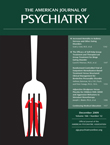Neural Activation Underlying Acute Grief in Women After the Loss of an Unborn Child
Abstract
Objective: The traumatic loss of an unborn child by induced termination of pregnancy because of fetal malformation is a major life event that causes intense maternal grief. Increasing evidence supports the hypothesis that the same neural structures involved in the experience of physical pain are involved in the experience of social pain and loss. Method: To investigate neural activation patterns related to acute grief, the authors conducted a functional MRI study of 12 post-termination women and 12 noninduced women who delivered a healthy child. Brain activation was measured while participants viewed pictures of happy baby, happy adult, and neutral adult faces. Results: Relative to comparison women, post-termination women showed greater activation in the middle and posterior cingulate gyrus, the inferior frontal gyrus, the middle temporal gyrus, the thalamus, and the brainstem in response to viewing happy baby faces. Functional connectivity between the cingulate gyrus and the thalamus during the processing of happy baby faces was significantly stronger in post-termination women. Conclusions: Overall, acute grief after the loss of an unborn child was closely related to the activation of the physical pain network encompassing the cingulate gyrus, the inferior frontal gyrus, the thalamus, and the brainstem. To the authors’ knowledge, the stronger functional thalamocingulate connectivity in post-termination women is the first in vivo demonstration of an involvement of the neural maternal attachment network in grief after the loss of an unborn child.



